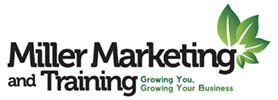‘Tis The Season For Add On Sales
Think of the last time you ordered pizza from Pizza Hut or Dominos. When you called for a medium pepperoni, the voice over the phone probably asked if you’d like a second pizza for just five bucks more (this question is probably programmed into a computer). Then, when you said “sounds good,” you were most likely asked to try the buffalo wings or breadsticks. These two pizza chains are masters of the add-on sale.
Also called up-selling or cross-selling, the add-on is one of the best ways to increase revenue from your existing clients. You’ve established a relationship with them, and they trust you, your products and your services enough to have already parted with their American greenbacks. However, keep in mind the moment they stop trusting you, the camaraderie is gone and so is their money.
Three Profit Producers
Many business leaders believe there are only three ways to bring in additional revenue:
- finding new clients;
- adding on sales to your existing clients; and
- motivating your existing clients to buy more frequently.
Which would you guess is the most expensive method? If you guessed bring in a new customer, you’re absolutely right! However, even though it’s most costly, you should never give up the hunt for new prospects. The key is to maintain a healthy balance of all three revenue boosters. To better understand the effective balance of using all three, consider McDonald’s ad campaigns. Granted, the company employs a huge marketing and advertising machine, which is part of the American conscience, but it effectively seeks to add new customers and persuade current customers to buy more often.
For example, the Arch Deluxe burger is targeted to attract new, adult customers, while the Monopoly promotion is designed to get current diners to buy more frequently. In addition, McDonald’s value meal and super-size promotions are add-on sales or examples of up-selling.
Even though adding new clients is the most expensive way to increase revenue (since time is money), it is often the only method most salespeople consider. However, the add-on may very well be the quickest and therefore cheapest sale you make all year.
Target Existing Clients
When you begin planning your Christmascape selling season, take a good look at your current client list and ask yourself, “Of my clients, who are the best prospects for Christmascape services?” They are your hottest prospects and a gold mine of new business just waiting to be tapped. (Though this may seem obvious, you wouldn’t believe how often opportunities for quick-and-easy sales are routinely overlooked.)
Keep in Close Contact
Again, add-on sales work well because you’ve already established a relationship with current clients, who know and trust your company. However, if they only hear form you when you pitch a new product, they may not think very highly of the relationship. On the other hand, a professional salesperson often visits his best clients to perform quality-assurance checks, follow up on a service problem or simply remain visible.
To build a strong relationship with clients, become their sales “consultant.” As such, you are the authority in your industry, and no one knows more about plants or Christmascpaing. Furthermore, you have a specialized knowledge about your clients’ individual needs, including an insight to their industry, as well as their likes and dislikes.
In effect, your clients come to rely on you. When they think of you as a “consultant,” you’ve reached a higher level in the relationship, and what you say or propose carries a lot of weight. At this point, when you talk about a great Christmascpae idea for their lobby or office, you command their undivided attention. You’re operating from a position of trust and credibility, proving you have your clients’ best interest at heart.
Ways to Wow ‘Em
The just-enough proposal is the second key to effective add-on sales and a selling strategy that will help you close more sales in the long run. Because interiorscpaers sell such a visual product, which can completely change a building’s ambiance, the best thing we can do is get our product in place – in the client’s interior.
In doing this, we’re trying to achieve the “WOW!” factor, or clients’ impressed reactions when looking at their newly transformed lobby or office space. Especially with the many emotions tied into Christmas, people are often wowed when they see all the trimmings in place.
Generally, this kind of reaction won’t result form clients looking at pictures of how great their lobby could look. However, this doesn’t mean that you shouldn’t use pictures to sell. The point is, structure your proposal conservatively at first and make the initial sale. Then, after your client sees and/or feels the difference, the add-on sale with all the extra “fru-frus” will be a cinch.
What’s It All Worth?
A couple issues back, I wrote about raising the perceived value of our interiorscape services. When the selling process begins, clients mentally weight their big stack of money against your small stack of benefits, or perceived product value. They buy when your stack of benefits is equal to, or more often, greater than their big stack of money.
One way to raise the perceived value in your prospects’ mind is to be sure to sell the stack of benefits associated with your Christmascpae services, such as the company’s enhanced image, convenience and professional designs – not just the simple facts or features. When clients see, feel and experience the product in their own environment, the perceived value is dramatically raised. The just-enough proposal is designed to offer a conservative initial program with the intent to sell add-on products and services later.
A slight variation of this approach is the “puppy dog” close, which allows prospects to enjoy your product without the risk and cost of ownership, since no money is exchanged. This closing technique gets its name from the pet store owner who allows a family to take a puppy home for the weekend “before they make a decision.” Of course, they fall in love with the dog and never bring it back, and in turn the pet store owner makes a sale.
Likewise, if you have sufficient working capital or labor, this could be a very effective and profitable marketing technique for Christmascape services. However, you must retain full control over those involved as well as what and how the program works. If done correctly, it could result in a real boon to your holiday bottom line.
The next best thing is to get your clients to take a look at someone else’s interior, or at least, your showroom. For example, if you have a particularly dramatic Christmascape installation this season, use it as a marketing tool for next year’s holiday sales. Furthermore, after the installation madness is over this December, offer to take a client to lunch and go by a couple of your finest Christmascape projects. This firsthand look may be all you need to close a sale for next year, or at least fit Christmascaping in your client’s budget.
As a parting thought, I want to again emphasize the need for balance in your sales efforts. Selling is a process of sowing and reaping. Rarely do we make a sale the same day, or even week, we meet a new prospect. Instead, the process is more likely one to six months long and oftentimes much longer. Therefore, don’t get so wrapped up in the bustle of Christmascaping that you stop planting the seeds of interiorscpae prospects. If you want to enjoy the harvest of closed sales in January, February and March, you must continue to sow the seeds this fall. Happy holidays and good selling!





